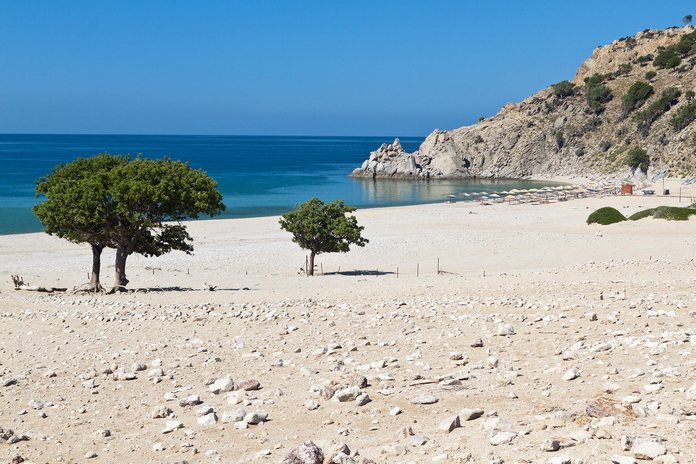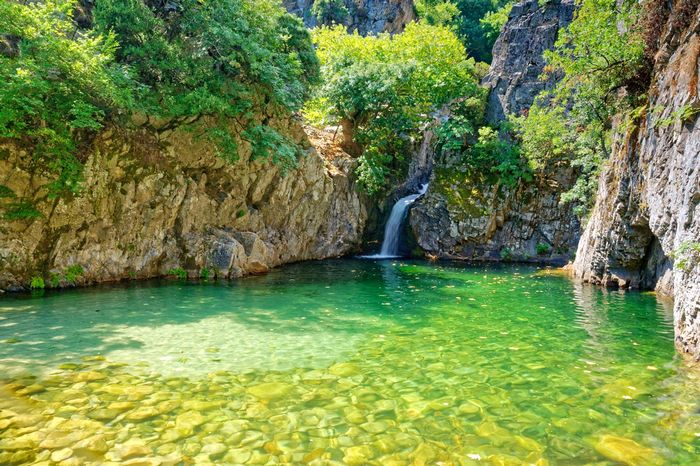The capital of the island, also called Samothraki is a traditional settlement built in the west part of the island 6km from the harbour, Kamariotissa. Its picturesque two- storey houses with their tiled roofs, ascend the slopes of the hill, with the castle on the summit.
The ruins of Palaipoli, 13km north of Khora, include the remains of the ancient city and its imposing fortifications, dating from the 6th c. BC. The remains of the sanctuary of the Great Gods, where the Kabeiran Mysteries were held in ancient times, have been restored. They lie west of the ancient city and cover an area of about 12.5 acres.

Excavations were begun on Samothraki by French archaeologists in 1863. and brought to light the superb headless statue of Nike, now in the Louvre museum.
The archaeological sites includes: a propylon, a circular building, a dedication, a a palace, aa sacred house, a tholos, a precinct, a sanctuary,a marble altar, a Hellenistic theatre, a stoa and a building of Nike in which the famous “Victory of Samothrace” was found
The sanctuary with its partly restored marble Doric columns is an imposing building that dominates the ruins. A short distance away are the traces of an ancient cemetery.
The Archaeological museum at Palaipoli houses important finds from the excavations on the island. In addition to the harbour and Chora, the settlements on the island include Therma, with its radioactive sulphur springs, Karyotypes, Profitis Ilias, Xiropotamos and Lakkoma.

GEOGRAPHICAL AND HISTORICAL TIMELINE
Samothraki lies in the north- east Aegean, opposite the coast of Thrace, 29 nautical miles from Alexandroupolis. The terrain is mountainous, the highest peak being Phengari, and richly wooded. The island has an area of 18 square kilometres and 58km of coastline.
Administratively, Samothraki is a province of the prefecture of Evros.
It has been inhabited since the Late Bronze Age and its earliest inhabitants were Karians, followed later by Thracians.
It was called Saos, Dardania and Melite. It was captured by the Persians and later became a member of the Athenian Confederacy. After the Pelopponesian war it was captured by the Spartans. Later, it became the subject of the Macedonians and the Romans.
The Romans declared it independant, as being sacred territory on account of Kaberian mysteries. In the Middle ages and the Byzantine period, the island fell into decline and suffered from pirate raids. In 1430, it passed into the control of the Genoese who fortified it and in 1457 fell into the hands of the Turks. It was united with Greece in 1912.